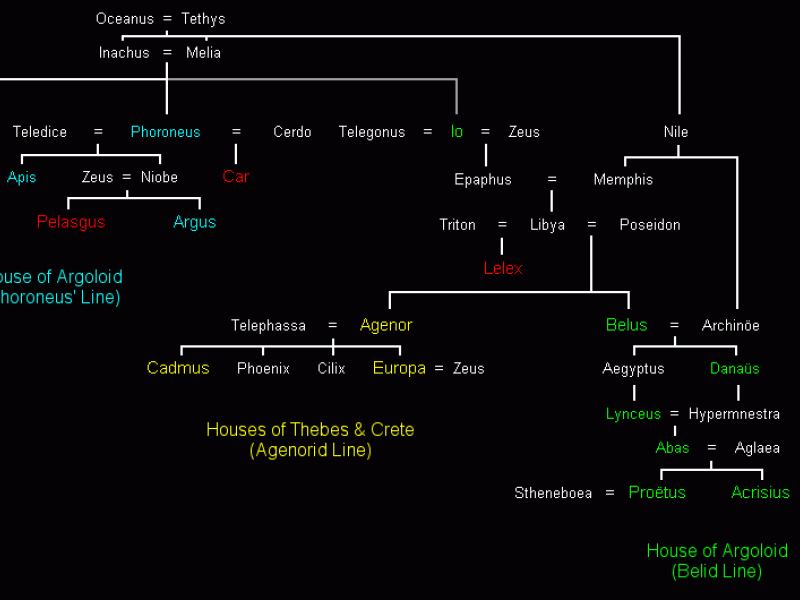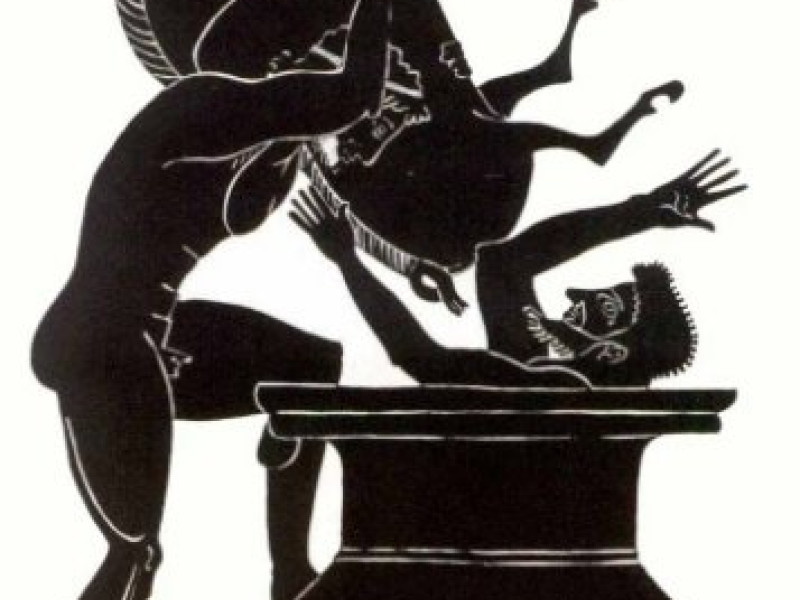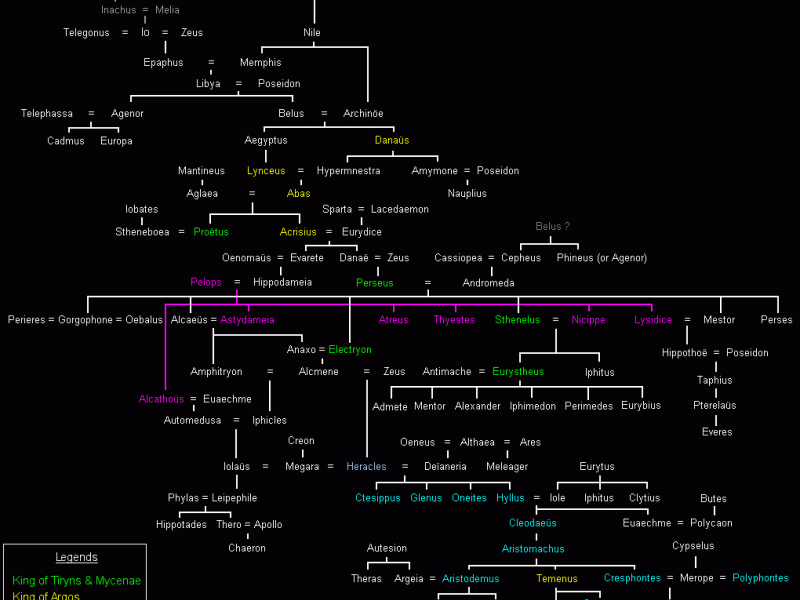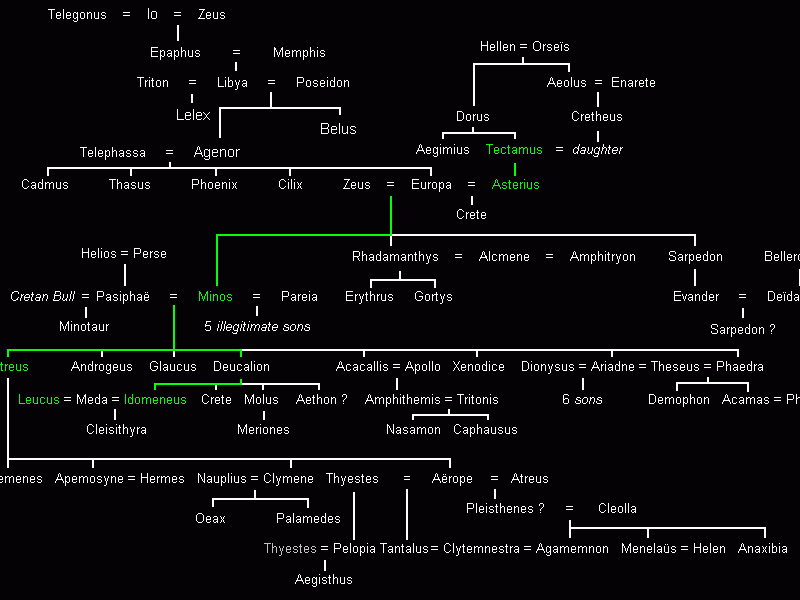Argus
So Argus (Ἄργος) succeeded his uncle (Apis). Argus was a son of Zeus and Niobe, who was Apis' sister. Argus became the new king of Phoronea, and he renamed the city after himself, Argos.
Niobe may have also been the mother of Pelasgus (Pelasgos, Πελασγός). Pelasgus became the king of Argos and during his reign, he had daughter named Larissa, after which he would later name the citadel of Argos. The people of Pelasgus settled in other parts of the Peloponnese and they were known as the Pelasgians (Πελασγοί). Others, such as Hesiod, said that Pelasgus was born from the earth. Pelasgus was the first ruler of the southern Peloponnese, especially in Arcadia and Messenia, where there was a strong myth about the Pelasgians.
After Argus, the next few generations are confusing, because of the number of different and conflicting sources. It remained confusing until the descendants of Io, Danaüs and Aegyptus, returned to Argos and took over the kingdom.
First I will follow the lineage of Argus by Apollodorus, the author of the Library.
Argus married a nymph named Evadne (Εἰάδνη), daughter of Strymon and Neaira. Argus had four sons: Ecabasus (Ecabasos), Peiras, Epidaurus and Criassus. According to Apollodorus, each of his sons ruled after the other.
Epidaurus (Epidauros) founded the city of Epidaurus. While Peiras (Peiren) was said to be the father of Io according to Hesiod, in the fragmented poem titled Aegimius.
Argus had another son named Iasus (Ἴασος, Iasos) by a different nymph named Ismene, daughter of the river-god Asopus (Asopos, Ἀσωπός). And this Iasus was said to be the father of Io. Apollodorus seemed to prefer this father of Io.
Ecbasus was the father of Agenor, and Agenor was the father of Argus Panoptes. Argus Panoptes had a hundred eyes and immense physical strength. Argus Panoptes was both a hero and a villain. As a hero, he slew the monster Echidna. As a villain, Hera set him to guard Io to keep the girl away from Zeus. Hermes killed Argus Panoptes.
Here you will find several family trees of the early kings of Argos.
According to the Greek geographer Pausanias, as he wrote in the Description of Greece, there was another variation to line of Argus. Argus was the father of Phorbas (Φόρβας), Peiras and Tiryns (Τίρυνς). Phorbas was the father of Triopas (Triops, Τριόπας). Triopas was the father of Pelasgus, Agenor, Iasus and Messene. Iasus was the father of Io, while Agenor was the father of Krotopos.
Krotopos was the father of Sthenelus and Psamathe. Apollo raped Psamathe, who became the mother of Linus (Linos). Sthenelus was father of Gelanor (Γελάνωρ). It was during Gelanor's reign that Danaüs arrived with his daughters.
You will find another two family trees that followed Pausanias' House of Argos.
Related Information
Name
Argus, Argos, Ἄργος.
Eponyms
Argus – Argives.
Sources
Library was written by Apollodorus.
Fabulae was written by Hyginus.
Promethus Bound was written by Aeschylus.
Odes (Pythian IX) was written by Pindar.
Related Articles
By Jimmy Joe






